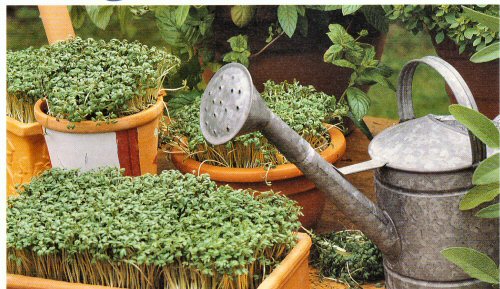
Cress Garden Herbs Lepidium Sativum
Cress also called garden cress, curled cress or pepper grass, Lepidium sativum is a grass-like plant that originated in the eastern Mediterranean region. Seeds of the cress plant have been found in the tombs of ancient Egyptian pharaohs. Like many other vegetables in the cruciferous family, including kale, cabbage and broccoli, cress contains glycosides and mustard oil.
These substances stimulate the metabolism and kidney activity, strengthen Lepidium sativum the stomach and gallbladder and are believed to have a curative effect on joint disorders and gout. Cress is also an important source of calcium, iron, vitamins C and E (two antioxidant nutrients that help protect the cells from damage by free radicals).
Cress can be harvested throughout the year. You can find cress in many markets year-round, but you can easily grow it at home on a windowsill or in your garden. Homegrown cress is preferred over store-bought cress because it generally has a better flavor.
- Prefers semi-shade. Turns bitter and too peppery in full sun.
- Grows in sand, peat, potting soil and moist paper towels.
- Is! 2-20 in. tall when fully grown. Harvest at 2-4 in.
Whether grown indoors or out, cut when the sprouts are 2-4 in. tall. Garden cress is a relative of watercress (Nasturtium officinale), which grows in stream eddies. Rich in beta-carotene, vitamins and minerals, the young garden cress sprouts are the part that is eaten. Cress helps to purify the blood and stimulate the appetite.